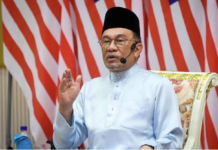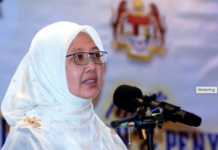KUALA LUMPUR, July 28 — The notification rate for Hepatitis B and C mortality in Malaysia shows an increase to 0.16 and 0.27 per 100,000 persons respectively in 2021, compared with only 0.13 and 0.19 per 100,000 persons reported in 2015.
Health Minister Khairy Jamaluddin said the notification rate for new cases of Hepatitis C also showed an increase to 8.59 per 100,000 persons in 2021, compared with 6.9 per 100,000 persons in 2015.
However, he said that the notification rate for new cases of Hepatitis B dropped to 11.6 persons per 100,000 population last year, compared with 12.2 persons in 2015.
“The increase in new cases of Hepatitis C is a result of the increased awareness of the public to undergo screening tests, especially among at-risk individuals.
“The increase also occurred following the implementation of targeted screening at health facilities, prison institutions and the National Anti-Drug Agency (AADK) as well as the health campaigns carried out,” he said in a statement in conjunction with the World Hepatitis Day 2022 today.
In this regard, Khairy advises the public, especially those at risk, not to delay undergoing screening tests and early detection that can prevent infection complications, such as severe liver disease and liver cancer and subsequent death. For Hepatitis C, specific treatment can now be given to cure the infection.
He also advised parents to ensure that their babies are given complete Hepatitis B immunisation according to the schedule set in the National Immunisation Programme, and if there are children who have dropped out of immunisation, they should seek advice from a nearby health clinic to reschedule immunisation.
Hepatitis is an inflammatory disease of the liver which is usually caused by a viral infection (viral hepatitis) which is the Hepatitis A, B, C, D or E virus.
Hepatitis A and E viruses are usually transmitted through the consumption of contaminated food or water and do not lead to chronic disease, while Hepatitis B, C and D viruses are transmitted through blood or body fluids and can lead to chronic disease, and are the main causes of liver cirrhosis and liver cancer.
Khairy said that the accessibility of DAA (direct-acting antiviral) drugs, which have high efficacy and are affordable, also increases the rate of Hepatitis C screening and treatment.
Therefore, he said Malaysia will continue to strengthen the Hepatitis C screening and treatment programme nationwide by improving the use of rapid diagnostic kits, which are easier, cheaper and faster, and can be obtained at health facilities.
He said access to Hepatitis C treatment will also be expanded to existing health clinics, including health clinics that have family physicians.
There are more than 300 health facilities providing Hepatitis C screening and treatment services since 2017.
“The Ministry of Health (MOH), in collaboration with the Drugs for Neglected Diseases Initiative (DNDi) and the Foundation for Innovative New Diagnostics (FIND), is conducting a study to review the effectiveness of DAA treatment in a shorter period of eight weeks, compared with 12 weeks.
“The study to explore the suitability of self-screening for Hepatitis C, carried out by the MOH, in collaboration with the Malaysian AIDS Council, is now in its final stages,” he said.
He said as for Hepatitis B vaccination, which was first introduced as part of the National Immunisation Programme in 1989, will continue to be strengthened through the administration of the Hepatitis B vaccine within 24 hours after the baby is born, because it is 95 per cent effective in preventing the virus infection during the birth period, before the next dose is given using the combination of six-in-one vaccine at the age of two, three, five and 18 months.
















